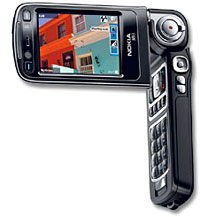 Hollywood hot shot Gary Oldman is today releasing his new short film, shot on the Nokia N93 we’re told.
Hollywood hot shot Gary Oldman is today releasing his new short film, shot on the Nokia N93 we’re told.
He’s taking the short label pretty literally, as the puppy is two minutes long, featuring what is described as “a round reflection in rippling water set to a haunting soundtrack.” Sounds lovely.
We’d imagine that this has cost Nokia a pretty penny, but it all goes towards burning into your brains that Nokia is about film. Creating it as we’ve seen here and watching it on their handsets too.
To that end, completely unprompted (we’re certain), Gazzer said, “Mobile video devices like the Nokia N93 allow us to capture the extraordinary moments in our ordinary days and share them with the world. The image in Donut is one such fleeting moment I happened upon that inspired me to grab my mobile video device out of my pocket and record it to share with others. I hope my film encourages people to do the same and I look forward to seeing the results on the Nokia Nseries Studio.”
Mr Oldman’s short will be premiering online on the neatly mentioned Nokia Nseries Studio, where from today (another coincidence?) anyone can upload short films to share with the world.
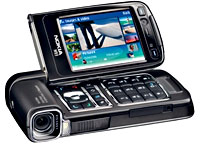 Happy Slapping
Happy Slapping
Camera phones have been used by some on the streets to make their own films, sadly many with violent overtones. Unfortunately the Hollywood violence that these youth had been subjected to for the whole of their lives (in the name of entertainment) wasn’t staged as it is in films, but real. Happy Slapping video’s stormed around school playgrounds about 18 months and featured members of the public getting assaulted, while those with the camera phones recording it laughed.
DVD quality or not?
Nokia appear to be back tracking a little on their definition of the quality of the onboard camera. When the N93 was first mooted, it was DVD-quality, it’s now being labelled DVD-like.
Nokia aren’t calling the N93 a phone with a camera on it, but a multimedia computer. You may mock, but this isn’t too far from the truth – it’s got a ton of processing power on board and a 3.2 megapixel lens with Carl Zeiss optics, DVD-like video capture and 3x optical zoom.
DV camcorders beware
Discussion of DVD-quality or DVD-like aside, the N93 shows the direction that camera-phones are taking, despite this early example being pretty bulky. The quality of these is approaching that of a standard DV (Digital Video) camera putting pressure on the DV manufacturers. The response to this from them is the introduction of HiDef camcorders. Expect this to become the standard.
 According to figures compiled by mmetrics.com, a research firm who strut around in the exciting world of mobile market measurement, when it comes to mobile phones there’s a hefty transatlantic gulf in smartphone tastes.
According to figures compiled by mmetrics.com, a research firm who strut around in the exciting world of mobile market measurement, when it comes to mobile phones there’s a hefty transatlantic gulf in smartphone tastes.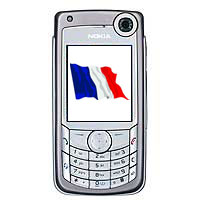 French say “Nous aimons Nokia”
French say “Nous aimons Nokia”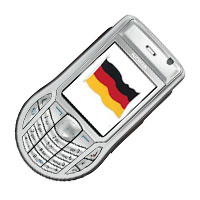 “Ja ist Nokia gut,” say Germans
“Ja ist Nokia gut,” say Germans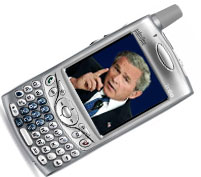 Americans go ape for Palm
Americans go ape for Palm Symbian, the smartphone OS company, are pulling a smart move (pun intended) by offering free assistance to Universities and their lecturers to have Symbian programming skills built into courses. Very clever.
Symbian, the smartphone OS company, are pulling a smart move (pun intended) by offering free assistance to Universities and their lecturers to have Symbian programming skills built into courses. Very clever.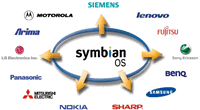 As a sweetener to the lecturers to get involved, Symbian will provide “exposure to Symbian’s industry partners.” Pretty healthy if you fancy running a software development company and want to get exposure for your potential products, or you’re getting a little bored of Uni life and fancy impressing those in industry that you’re a bit of visionary.
As a sweetener to the lecturers to get involved, Symbian will provide “exposure to Symbian’s industry partners.” Pretty healthy if you fancy running a software development company and want to get exposure for your potential products, or you’re getting a little bored of Uni life and fancy impressing those in industry that you’re a bit of visionary.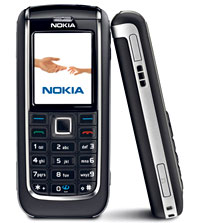 Slipping and slithering down the well oiled product slipway at Nokia is their latest swishy tri-band phone, the Nokia 6080 (no relation to their 1997 phone of the same name!).
Slipping and slithering down the well oiled product slipway at Nokia is their latest swishy tri-band phone, the Nokia 6080 (no relation to their 1997 phone of the same name!).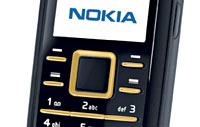 Sporting a backlit keypad and bright colour display, the handset comes bundled with a stereo headset and offers all the usual customisation options (with wallpapers, themes, annoying ring tones etc) to keep da kidz happy.
Sporting a backlit keypad and bright colour display, the handset comes bundled with a stereo headset and offers all the usual customisation options (with wallpapers, themes, annoying ring tones etc) to keep da kidz happy.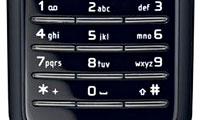 Talk time is a distinctively average 3.5 hours with a standby time of up to 12 days.
Talk time is a distinctively average 3.5 hours with a standby time of up to 12 days.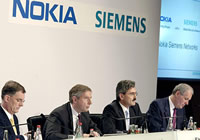 In the wake of the dot com boom, then the dot com collapse, equipment vendors have been feeling the fall-out and mergers seem to be the way to reconcile the collapsing markets. The Nokia-Siemens merger announcement bears witness to this.
In the wake of the dot com boom, then the dot com collapse, equipment vendors have been feeling the fall-out and mergers seem to be the way to reconcile the collapsing markets. The Nokia-Siemens merger announcement bears witness to this.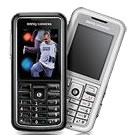 Siemens, a German giant
Siemens, a German giant Companies such as Huawei (“wu why” sometimes pronounced “who are we” which fits their appearance into markets that they had no presence in until recently) are starting to make serious dents into the Tier 1 telecoms/ISP markets.
Companies such as Huawei (“wu why” sometimes pronounced “who are we” which fits their appearance into markets that they had no presence in until recently) are starting to make serious dents into the Tier 1 telecoms/ISP markets.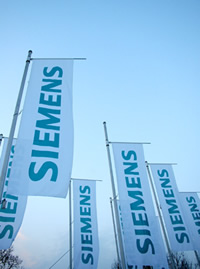 Now they’ve established themselves in the ISP market, the surrounding markets are being worked on (and since most ISPs are now owned by telecoms companies, it’s the telecoms markets that are easiest to move into).
Now they’ve established themselves in the ISP market, the surrounding markets are being worked on (and since most ISPs are now owned by telecoms companies, it’s the telecoms markets that are easiest to move into).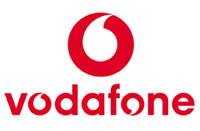 We all know the mobile handset is totally fragmented. Sure there’s a standard – it’s called Nokia – but everyone who isn’t Nokia isn’t very happy about that.
We all know the mobile handset is totally fragmented. Sure there’s a standard – it’s called Nokia – but everyone who isn’t Nokia isn’t very happy about that. Who’s in? Who’s out?
Who’s in? Who’s out? Much excitement is being generated by those companies already using Linux in their handsets. In a ‘don’t forget we’ve been doing this for ages’ way, Yoshiharu Tamura, Executive General Manager, Mobile Terminals Business Unit, NEC Corporation expounded , “As one of the leading pioneers with almost two years of experience shipping Linux-based mobile phones, we are delighted to participate in this initiative. We expect the foundation activities will accelerate further expansion of mobile Linux application developer participation, as well as global market growth of 3G mobile handsets.”
Much excitement is being generated by those companies already using Linux in their handsets. In a ‘don’t forget we’ve been doing this for ages’ way, Yoshiharu Tamura, Executive General Manager, Mobile Terminals Business Unit, NEC Corporation expounded , “As one of the leading pioneers with almost two years of experience shipping Linux-based mobile phones, we are delighted to participate in this initiative. We expect the foundation activities will accelerate further expansion of mobile Linux application developer participation, as well as global market growth of 3G mobile handsets.”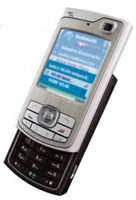 The dream of effortless – and easy to see – mobile Web surfing has taken a step forward with the release of Nokia’s N80 smartphone. The new device is rapidly garnering praise for its stunning screen which takes the stress out of Web browsing and picture viewing.
The dream of effortless – and easy to see – mobile Web surfing has taken a step forward with the release of Nokia’s N80 smartphone. The new device is rapidly garnering praise for its stunning screen which takes the stress out of Web browsing and picture viewing.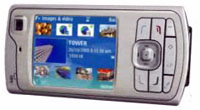 The increased density of the display makes the interface more crisp and easier to read and Nokia have taken advantage of this by utilizing vector graphics to sharpen up icons and fonts, reducing the blockiness associated with lower resolution devices.
The increased density of the display makes the interface more crisp and easier to read and Nokia have taken advantage of this by utilizing vector graphics to sharpen up icons and fonts, reducing the blockiness associated with lower resolution devices.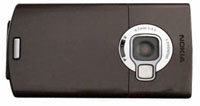 The N80 is pretty sharp on taking pictures too. With a 3.2 megapixel camera built-in, the N80 can deliver stills at 2048 x 1536 pixels, substantial enough to challenge regular digi cameras. Video recording is good at 352 x 288, the same resolution as the N70 and N90, and a VGA camera is mounted on the front for video calls.
The N80 is pretty sharp on taking pictures too. With a 3.2 megapixel camera built-in, the N80 can deliver stills at 2048 x 1536 pixels, substantial enough to challenge regular digi cameras. Video recording is good at 352 x 288, the same resolution as the N70 and N90, and a VGA camera is mounted on the front for video calls. Sad but (supposedly) true: a new study by Nokia has found that over one in five mobile owners said they’d find losing their phone more upsetting than their wallet, credit cards and – unbelievably – even their wedding ring.
Sad but (supposedly) true: a new study by Nokia has found that over one in five mobile owners said they’d find losing their phone more upsetting than their wallet, credit cards and – unbelievably – even their wedding ring.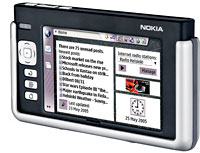 Nokia commissioned the research in 11 countries around the globe to discover people’s attitudes towards current and future mobiles, and generally found that people *heart* the things the planet over.
Nokia commissioned the research in 11 countries around the globe to discover people’s attitudes towards current and future mobiles, and generally found that people *heart* the things the planet over. Surfing on the move
Surfing on the move Nokia took a step into the world of online content delivery today with the launch of a new Website specialising in downloadable games for its N-Gage device. Gamers can download time-limited demos of games such as One and Pathway to Glory before purchasing at between 19.99 and 29.99 euros.
Nokia took a step into the world of online content delivery today with the launch of a new Website specialising in downloadable games for its N-Gage device. Gamers can download time-limited demos of games such as One and Pathway to Glory before purchasing at between 19.99 and 29.99 euros.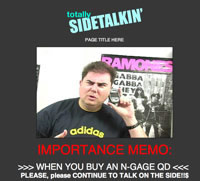 While the concept of side-talking may fuel nerd in-jokes for some time to come (see
While the concept of side-talking may fuel nerd in-jokes for some time to come (see 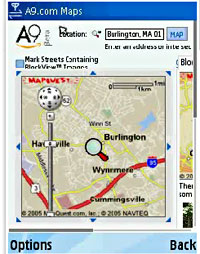 At the W3C conference in Edinburgh today, in a move to get the mobile industry (and possibly more) to standardise on a single Web browser, Nokia has released the source code for the mobile Web browser it developed last year.
At the W3C conference in Edinburgh today, in a move to get the mobile industry (and possibly more) to standardise on a single Web browser, Nokia has released the source code for the mobile Web browser it developed last year.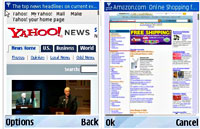 “We want to reduce the fragmentation currently in place in mobile browsing,” said Lee Epting, VP of Forum Nokia, Nokia’s software development support program.
“We want to reduce the fragmentation currently in place in mobile browsing,” said Lee Epting, VP of Forum Nokia, Nokia’s software development support program.